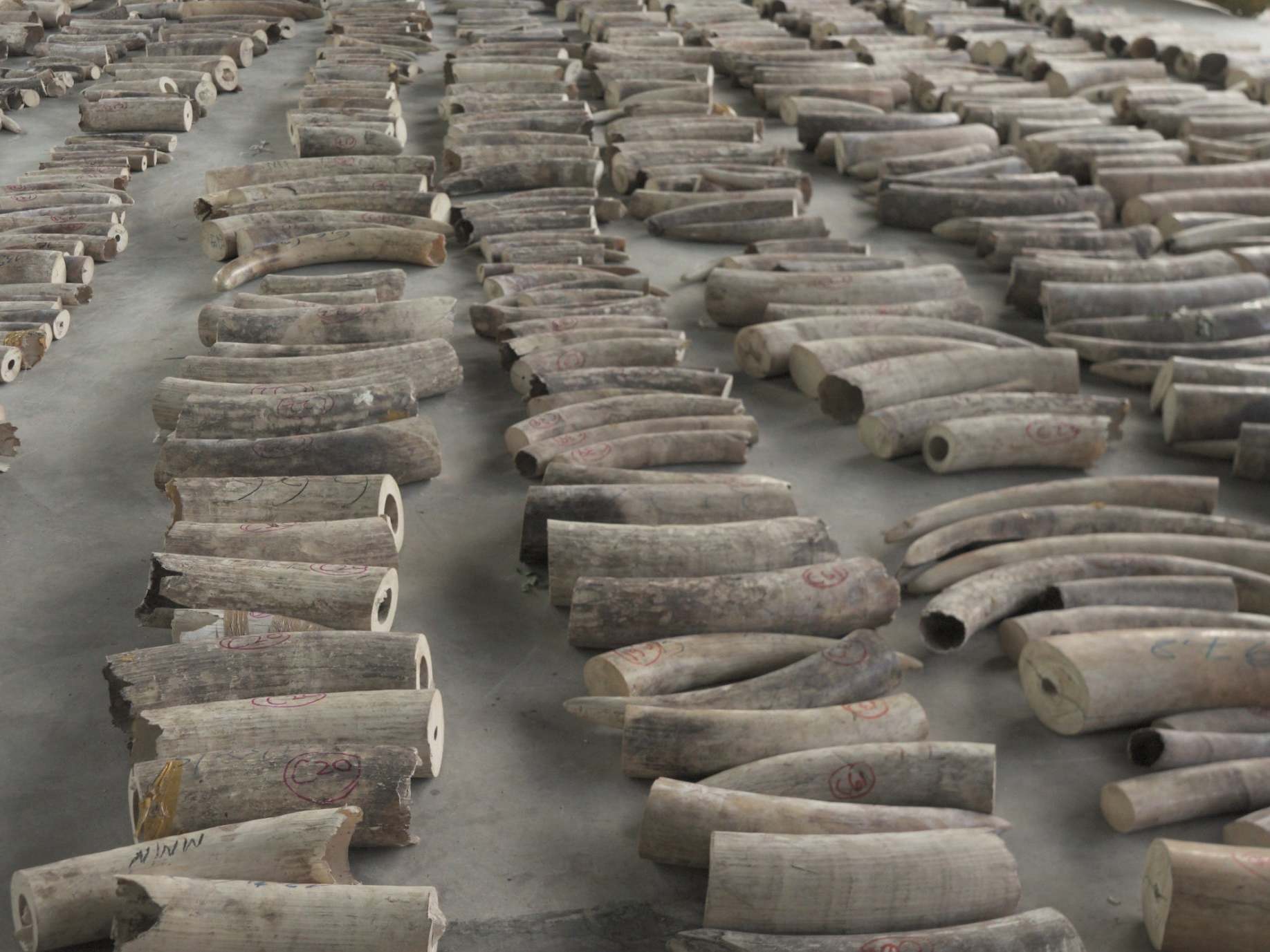This website uses cookies so that we can provide you with the best user experience possible. Cookie information is stored in your browser and performs functions such as recognising you when you return to our website and helping our team to understand which sections of the website you find most interesting and useful.

It can be hard to grasp the vast scale of some illegal wildlife seizures that hit the headlines; nine tonnes of ivory found in a container arriving into Vietnam from the Democratic Republic of Congo; more than 10,000 live turtles and tortoises packed into a Madagascan house; 4,000 pangolins defrosting inside a shipping container at a port in Sumatra.
But the recent trend of “seize and post” – in which law enforcers upload photographs of their discoveries to social media – is helping to open the world’s eyes to this multibillion pound illegal trade. However, experts warn it does little to deter or prevent the criminals involved.
Stephen Carmody, chief investigator of Wildlife Justice Commission, said that “you see it particularly with law enforcement agencies working in south-east Asia. Within hours of them making a seizure there’s a media release with a picture of people standing in front of the wildlife, saying ‘look how good we are, we’ve just seized this ivory, or these pangolins’. But a seizure without an investigation is useless”.
Speaking on a webinar discussing law enforcement opportunities to combat illegal wildlife trade in Asia, hosted by the United Nations Office on Drugs and Crime (UNODC), Mr Carmody and the other panellists were in agreement that instead of prioritising photos for Facebook after making a discovery, agencies need to contact the source nation and work collaboratively to develop an effective investigative strategy. In short: they need to get hunting the traffickers.
The Independent’s Stop The Wildlife Trade campaign was launched by its proprietor Evgeny Lebedev to call for an end to high-risk wildlife markets and for an international effort to regulate the illegal trade in wild animals to reduce our risk of future pandemics.
Mr Carmody said: “A seizure needs to either represent the end phase of an investigation where you go and make arrests, or the beginning where you start working transnationally to trace back. At the moment there is a big disconnect, and that comes back to the lack of intelligence analysis in this field. If there’s no intelligence there can’t be any intelligence sharing.”
Wildlife trafficking groups not only often use the same routes as people involved in other crimes, but also often run hand-in-hand with tax evasion, corruption, money laundering and violent crime. However, according to Mr Carmody, wildlife criminals operate in ways that are unlike more sophisticated law-breakers. And their use of social media can be an opportunity for data-gathering for law enforcers to exploit.
“People involved in the wildlife trade very often have their Facebook profiles open and openly show off their wealth,” said Mr Carmody. “They are operationally very poor. They don’t change their phone numbers regularly, they meet customers at same bars or restaurants and they don’t practice surveillance. Rather than organised crime, I would call [wildlife criminals] disorganised crime.
“This might be because law enforcement just isn’t an issue for them, so they don’t feel they have to be more careful. What needs to change is for us to start making them react to us for a change, rather than us reacting to them.”
Another much needed change in order to combat criminal operations lies directly with Facebook and other social media companies, who unwittingly play a role in not only facilitating the illegal wildlife trade but allowing it to proliferate. Despite their best intentions, social platforms serve as a vehicle for traffickers to market their illegal goods, connect with buyers, and even to receive payments – whether openly or in closed groups.
In 2017, Facebook and Instagram banned the sale of all animals, and the following year they joined other tech platforms to set up The Coalition to End Wildlife Trafficking Online, aiming to reduce online wildlife trafficking by 80 percent by 2020. Yet today, on both Facebook and Instagram, there are countless groups and individuals selling domestic and exotic pets, as well as closed groups selling animal products such as ivory.
Earlier this year, The Independent reported that endangered pangolins had been discovered for sale on Facebook, according to report by Tech Transparency Project. Facebook was contacted for a response to this article.
Clearly, issuing policies banning illegal wildlife trade doesn’t amount to enforcement. Experts agree that increased moderation and removal of content is needed to disrupt and disband the networks of users engaging in illegal wildlife trade, and the information gathered should be shared with law enforcers.
Fabrizio Fioroni, the South Asia Advisor on Anti-Money Laundering and Counter Financing of Terrorism, agrees that only through sustained, committed transnational operations – including intelligence from social media – can meaningful wins be made against wildlife criminals. Mr Fioroni said “we cannot overestimate the importance for communication across different law enforcement departments and agencies, and between different countries. It is vital that the right people talk to each other”.
Mr Carmody adds: “We [law enforcers] are part of the problem. There is no international standardisation of response to these crimes. We need greater sharing and exchange of information. It won’t take much of a change to see these criminal networks being dismantled.”
Getting the right people talking to each other might sound like a fairly obvious starting point, but strengthening cooperation and sharing of information is a much more proactive approach to ending wildlife crime than posting snaps in pursuit of Facebook “likes”.



 Africana55 Radio
Africana55 Radio 

